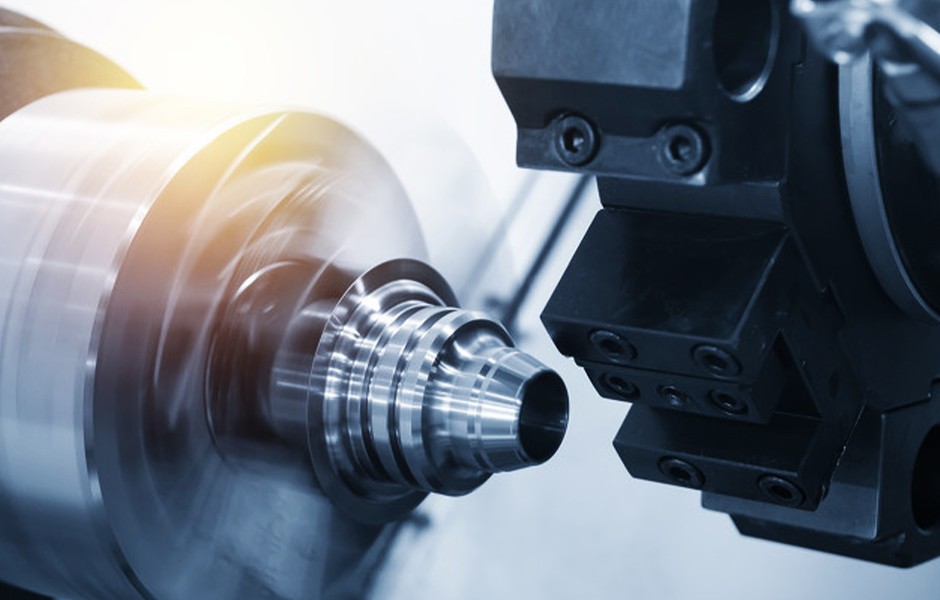CNC machining can create high precision, end-use parts for nearly any application. It allows for amazingly tight tolerances on part dimensions and complex designs. But like any manufacturing process, the material selection is a critical component in determining the overall functionality and cost of your part: the designer defines the important material characteristics to the design—hardness, rigidity, chemical resistance, heat treatability, and thermal stability to name a few.

Consider Manufacturing Time & Cost
If you’re trying to keep overall costs low, you’ll want to sincerely consider the type of material you use. High strength materials such as steel require higher grade milling and turning equipment. Also if you have a custom machine part that requires extreme precision, such as a pneumatic value for a medical machine, it will take more time to manufacture to ensure that each divot, turn, notch, etc. is precise.
Consider Your Use Environment
Whether you need a custom machined part to withhold in an outside environment or an inside environment, it’s important to know which materials are better suited for varying environments. For instance, if you need a part that would function outside, your custom part would best be crafted from stainless steel as opposed to carbon alloy to avoid rust and corroding.
Consider Performance Temperatures
Depending on the environment in which the part will be operating, there may only be certain materials that can withstand significant heat or cool temperatures without breaking down. Some materials will expand under even the smallest temperature changes, so it is important to know which materials are strong and stable enough to operate at different temperatures.
You’ll also want to consider any specifications required based on the environment your part will be used in, such as medical, military, or food production, to ensure that it meets those standards and requirements.
Consider Weight Requirements
The next thing you should consider when choosing the materials for your custom machined part is the weight of the material. Heavy steel or iron weigh more, so if your application is weight-sensitive, you may want to go with a material that is strong, but won’t tip the scales (i.e. polymers, certain alloys).
Consider Strength Requirements
Similar to how material weight influences what you choose to manufacture your part out of, the strength of your custom machined part can vary based on material as well. When choosing the right material for the job, you’ll want to take into consideration factors such as endurance strength (ability to absorb stress), wear resistance, hardness, and tensile strength (ability to pull something).
Common CNC Machining Part Materials
Aluminum: This material is widely used for CNC milling operations. It is lightweight, corrosion resistant, non-magnetic, easy to machine, and affordable, all of which make it an ideal option for many parts and products. It comes in many grades (e.g., 6061 and 7075), each of which offers slightly different characteristics that make it suitable for specific purposes. Examples of typical CNC machined aluminum components include aircraft parts, automotive parts, bike frames, and food containers.
Brass: This material is commonly utilized for precision machining operations. It is easy to work and cost-effective, which make it perfect for manufacturing a variety of precision components. It is available in numerous variations (e.g., C360 and C260), each with different compositions offering slightly different material properties. Other key advantages include attractive appearance, non-sparking, non-magnetic, and anti-bacterial/anti-microbial. Examples of typical CNC machined brass components include decorative hardware, musical instruments, plumbing fittings, and tools.
Carbon steel: This material is one of the most popular CNC machining material options. It comes in many grades (e.g., 1018, 1045, 1214, and 1215) that offer unique properties for use in different applications. Typical characteristics include high strength and toughness and good machinability, weldability, and heat treatability. Examples of typical CNC machined carbon steel components include fasteners, gears, rods, and other mechanical components.
Copper alloys: This material is highly versatile. Its many advantageous characteristics, such as conductivity, machinability, and ductility, make it a good material choice for various applications. It can offer slightly different properties depending on the elements with which it is alloyed. Examples of typical CNC machined copper components include computer chips, pipes/tubes, tanks, and valves.
Hastelloy: This material is highly resistant to corrosion, which makes it excellent for use in chemical processing applications. It also offers superior resistance to atmospheric oxidation, pitting, and stress-corrosion cracking. These qualities make it an ideal material for chemical manufacturing, paper production, and pharmaceutical equipment. Examples of typical CNC machined Hastelloy components include bars, coils, pipes, plates, and tubes.
Stainless steel: This material is another popular option for CNC machining operations. It is well-known for its corrosion resistance. However, it also has an excellent strength-to-weight ratio, extreme temperature resistance, and an attractive appearance. Different grades of stainless steel (e.g., 303, 304, and 316) offer slightly different characteristics depending on their exact composition. Examples of typical CNC machined stainless steel components include automobile parts, consumer appliances, electronic hardware, and medical instruments.
Titanium: This material exhibits many advantageous properties that make it suitable for demanding or specialized applications, such as high strength, light weight, corrosion resistance, and biocompatibility. Examples of typical CNC machined titanium components include aircraft parts, medical implants, and jewelry.